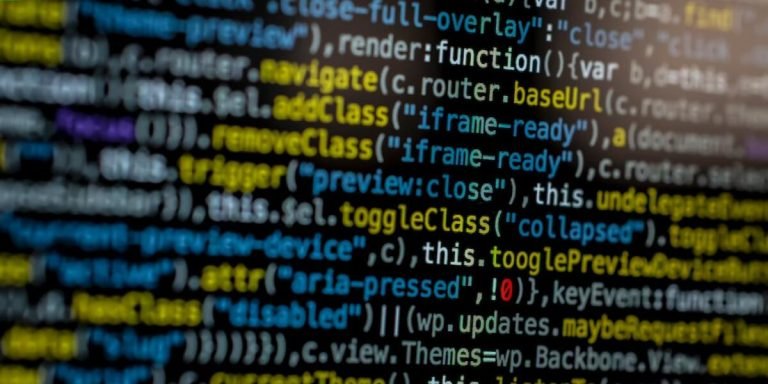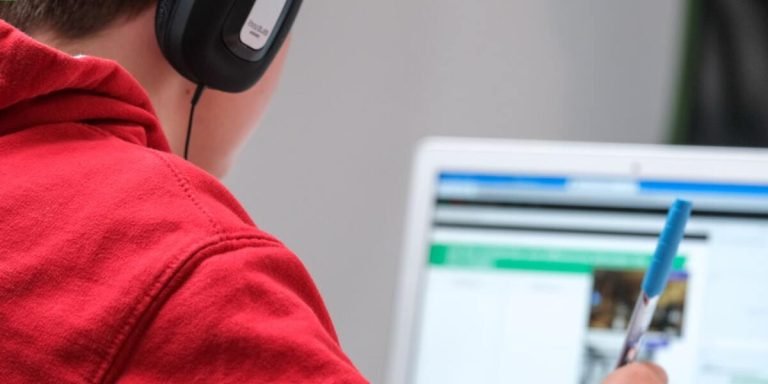M Learning: Transforming Childhood Education in the Digital Age
The introduction of digital technology in education, specifically “m learning,” has revolutionized the contemporary educational landscape. M learning or mobile learning refers to any form of instruction or knowledge acquisition that happens through smartphones, tablets, and other portable devices. It embodies a novel perspective on teaching techniques integrating day-to-day technological tools with traditional curriculum.
Optimizing this integration can be an incredibly effective method for fostering diverse skills in our children while maintaining their interest and engagement levels high. Technology integration transcends mere computer usage; it’s about incorporating software applications, Internet resources, digital cameras/recorders into lessons to enhance students’ understanding and real-world applicability. This blog will explore how m-learning is altering childhood education patterns by providing dynamic pedagogical practices alongside advancing tech trends.
Did you know?
According to a report by Ambient Insight, the m-learning (mobile learning) market is anticipated to reach $37.8 billion by 2020, significantly transforming how children educate and learn in this digital age.
The Role of M-Learning in Today’s Educational Ecosystem
In the dynamic world of contemporary education, harnessing technology has become an integral part of childhood learning. At the forefront of this technological revolution is mobile-learning or M-Learning – a mode that transforms traditional approaches to education. No longer confined within rigid classroom structures and timeframes, youngsters are now empowered to engage with educational content at their own pace and convenience.
M-learning symbolizes versatility in today’s educational ecosystem as it transcends geographic barriers and offers easy access across various devices like smartphones or tablets. Given how digitally savvy young learners have become in 2023, educators globally recognize its value for creating more interactive classrooms which resonate with younger minds better than traditional teaching methods do.
Moreover, m-learning platforms offer diverse functionalities including multimedia presentations, virtual simulations and even online assessments – all under one roof! This diversity not only ensures comprehensive coverage but also facilitates different types of learners through varied instructional strategies thus making studying fun again! Whether we realize it or not; m-learning has undeniably changed our perception towards academics by instilling a sense of independence among students propelling them into future-ready individuals equipped with digital literacy skills alongside subject knowledge.
Understanding Mobile Learning and its Impact on Education
Mobile learning, often abbreviated as “m-learning”, fundamentally reshapes the contemporary educational ecosystem. As we pace through 2023, understanding m-learning and its staggering impact on education is more than crucial.
M-Learning goes beyond traditional classroom borders by leveraging digital technology to deliver teaching materials straight into students’ palms. It combines mobile devices with interactive contents and allows real-time access anywhere, anytime enhancing convenience for learners of all ages.
Its influence over today’s pedagogical practices has been enormous – boosting student engagement levels remarkably being one prime example. With appealing multimedia lessons available right at their fingertips, children are found to exhibit increased interest towards studies – seemingly tedious concepts now transformed into exciting visual narratives that stick longer in young minds!
Furthermore, M-Learning tools provide immediate feedback on performance which proves beneficial not just for evaluating individual progress but also promotes self-regulated learning amongst kids- an imperative skill indeed considering this rapidly evolving world demands lifelong learning abilities from next-gen leaders!
Lastly yet importantly lies networked communication; or better said fostering global collaboration & discussions around subjects under study via online forums thus bridging geographical gaps amidst curious young scholars worldwide.
Key Features of M-Learning Platforms Enhancing Student Engagement
In the rapidly evolving digital landscape, m-learning or mobile learning has become a game-changer in education. It is no longer an addition but an integral part of today’s educational ecosystems due to several key features that enhance student engagement.
One standout feature of m-learning platforms is their flexibility. Students can access study materials anytime, anywhere via smartphones, tablets, or laptops which provides great freedom to customize their own learning process according to their pace and convenience.
Furthermore, interactive multimedia content holds students’ attention better than traditional teaching methods. M-Learning platforms leverage videos, infographics and animations for delivering complex ideas in simple ways thereby making lessons engaging and easily understandable.
A significant characteristic of these platforms is learner collaboration facilitated by discussion forums and chat-rooms where the learners share thoughts or solve problems together creating collaborative knowledge spaces promoting active student participation.
m-learning embraces personalized adaptive learning systems using algorithms tracking individual progress adapting content accordingly ensuring each user’s unique needs are catered effectively increasing motivation among learners leading them towards success.
Quizzes play a crucial role too as they challenge students testing understanding instantly while providing immediate feedback enabling students to rectify mistakes on-spot embracing efficient self-paced learning practices enhancing overall academic performance.
Finally yet importantly considering data privacy concerns most reputed m-learning providers ensure strict compliance with applicable laws safeguarding sensitive user information fulfilling ethical obligations fostering trust amongst users.
Strategies for Implementing Technology Integration via Mobile Learning
The interweaving of technology into everyday classroom practices has revolutionized the sphere of education, and at its core lies mobile learning or “m-learning”. This concept incorporates a range of handheld devices, including tablets and smartphones that have now become an integral part in shaping young minds. Embracing m-learning presents educators with unique opportunities to create engaging learning experiences while stepping well beyond traditional teaching methodologies.
Implementing technology integration through m-learning requires strategic planning and mindful execution. It begins by acquainting both teachers and students with suitable applications designed for educational purposes. These might include interactive e-books, digital worksheets, online quizzes or educational games which encourage active participation from learners resulting in better retention.
However, it is essential to ensure balanced screen time without compromising on face-to-face interactions among peers as well as between teacher-student relationships. In essence, the goal should be to seamlessly merge conventional pedagogies alongside cutting-edge tech aid maximizing academic outcomes whilst fostering creativity within youngsters.
Remember though; success doesn’t lie simply upon introducing gadgets into classrooms but rather how effectively they are utilized towards enhancing quality education overall.
Designing Curriculum for Mobile Devices: Best Practices
Designing a curriculum for mobile devices requires an innovative approach that embraces the scope of m-learning. The goal should be to create educational content that is engaging, interactive and adaptable to varying learning styles.
A few best practices can serve as guidelines when integrating technology in education:
1. **Prioritize Learner Engagement**: Utilizing interactivity features available on mobile platforms like touch screens, cameras or accelerometers will make your digital curriculum more compelling and immersive while promoting active participation from students.
2. **Optimize Content Layout**: Mobile interfaces are typically smaller than desktop versions meaning they require efficient use of space due its limited availability. It’s important to optimize text sizes, images and video layouts so they render well across various screen resolutions without compromising readability or visual quality.
3: **Focus on Responsiveness & Accessibility**: Given the diversity of devices today ranging from smartphones to tablets not all having same operating specifications; implementing responsive design ensures your e-curriculum adapts seamlessly irrespective device type used by student thus making it universally accessible which aligns with principles outlined under Universal Design for Learning (UDL) framework.
4: **Use Multimedia Strategically:** Audio-visual elements increase retention rates significantly hence incorporating multimedia strategically within lessons enhances comprehension along with reinforcing key concepts thereby improving overall learner experience substantially .
Assessing the Effectiveness of M-Learning Interventions in Schools
The progressive move towards technology integration in education has paved the way for mobile learning, or m-learning. As parents and educators, it is pivotal to assess its effectiveness within our classrooms.
M-Learning interventions provide an opportunity to introduce new technologies into traditional classroom environments, making lessons more engaging and interactive. A well-implemented M-Learning strategy can enhance students’ curiosity about academic subjects while promoting resourcefulness when using digital tools.
Assessing the success of these initiatives involves a keen observation of certain key areas:
1. **Student Engagement:** Are your children showing increased interest in their subjects due to these technological advancements? One significant indicator that m-learning implementations are effective is higher levels of student engagement.
2. **Ease Of Access**: Consider whether this educational approach offers easy access for all students regardless of their socio-economic background ensures equality in terms of opportunities offered by digital learning experiences.
3. **Academic Performance:** Another important factor would be improvements seen on the academic front – consistent increase in grades could stand testament to successful implementation.
4. **Adaptability And Flexibility** : With classes increasingly becoming virtual think if students have adapted comfortably and effortlessly with changing dynamics; being able to learn from anywhere at any time via tablets/smartphones holds promise for adaptability which again points towards successful incorporation.
5.Remember though no two schools will implement as well as measure efficacy similarly but above pointers should serve pretty universally.
Challenges and Solutions in Adopting M-Learning in Educational Institutions
Adopting M-Learning, or mobile learning, in educational institutions is no longer a future concept. In 2023, it’s an integral part of the modern education system and daily classroom environment. It leverages technology integration to connect students with their studies anytime and anywhere through smartphones and tablets. However, like any technological adoption, introducing m-learning comes bundled with its share of challenges.
The biggest challenge faced by educators worldwide is creating engaging content tailored for small screens on mobile devices that can keep young minds hooked without physical interaction or supervision from teachers. The second hurdle lies within the infrastructure which includes reliable internet connectivity as well as device availability among all students equally so none feel left out due to socioeconomic reasons.
Despite these hurdles though, there are solutions available too that make adopting m-learning possible more than ever before – courtesy of consistent advancements in digital technologies enveloping our lives today. For instance; App-based learning platforms have emerged allowing teachers to design interactive activities making lessons fun rather than burdensome when offered via a screen alone.
Moreover,to overcome infrastructural barriers; many initiatives are underway where companies donate refurbished gadgets while telecom providers offer discounted data plans particularly designed for online study purposes ensuring economic background doesn’t bar anyone from accessing knowledge anymore.In short,M-Learning may come across certain roadblocks but they aren’t insurmountable given how far we’ve progressed technologically.Its presence reflects not just adaptation but evolution towards an inclusive & exhaustive educational ecosystem paving way forward nurturing learners aptly compatible with this new age.
Overcoming Technical Barriers to Maximize Technology Adoption
The advances of technology, particularly mobile learning or m-learning, pave the way for change in traditional educational frameworks. However, integrating these changes isn’t always as smooth sailing due to technical barriers that may arise. Let’s delve into how we can surmount these challenges and maximize technological adoption in our schools.
Moreover,schools often grapple with issues like inadequate infrastructure and lack of high-speed internet connectivity when implementing M-Learning strategies which hinders this transformative shift from taking place seamlessly . Investing actively in reliable broadband connections and setting up fully-equipped computer labs could be potential solutions.
Another common barrier obstructing the integration process lies within students’ uneven access to gadgets required for M-Learning at home; popularly known as ‘the Digital Divide’. Herein comes the relevance of government initiatives aiming towards making technology more accessible – committing resources equitably across communities can improve outreach substantially.
Protecting the data privacy rights also represent a pressing concern when adopting new technologies considering 2023’s ever-evolving cyber security threats.Technology providers should ensure their products comply with relevant laws such as Children’s Online Privacy Protection Act (COPPA) thereby promoting trustful alliances between school districts ,parents and themselves .
Ensuring Equitable Access to M-Learning Resources
In the quest for streamlining educational processes, M-learning has proven to be a game-changer. However, one challenge that surfaces frequently is securing equitable access to m-learning resources for every student.
To ensure uniformity in accessibility of mlearning tools across all stratum of society several measures can be taken:
1) **Funding Resources**: It’s essential that schools reach out seeking assistance from governmental bodies or private sectors who provide funds focused on education innovation. Leveraging this funding can help institutions purchase necessary equipment ensuring each learner gets fair exposure to tech-based learning.
2) **Collaborating with Tech Companies**: Partnerships with technology corporations could lead towards schemes like discounted rates or donation programs – enabling more children benefitting from such collaborations.
3) **Providing Internet Access Points**: Schools could establish Wifi zones within their campuses and local neighborhoods allowing pupils access high-speed net connectivity devoid any charge.
Organizations initiating community development projects often earmark funds specifically designed at encouraging technological advancement inclusivity among underserved communities.
Conclusion
As we turn the final page of our exploration into ‘m learning,’ it becomes clearly evident that this revolution in technology isn’t just changing how children learn, but also shaping a generation poised to lead us all into an exciting digital future. Our youngsters are at the precipice of this incredibly transformative era, and as parents and educators, it’s crucial that we comprehend m-learning’s vast possibilities and integrate these tools effectively.
We understand you might still have questions or concerns about your child’s foray into M-learning – after all, adapting to change is never easy. But don’t worry; there is plenty more advice where that came from on our website! Whether you need tips on guiding screen time or want reassurance with research-backed articles – remember our platform stands ready as a valuable resource for every parent and educator navigating these new educational frontiers.







